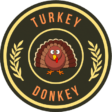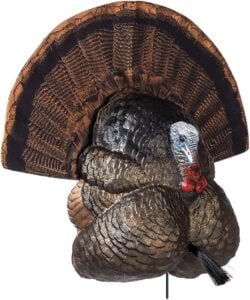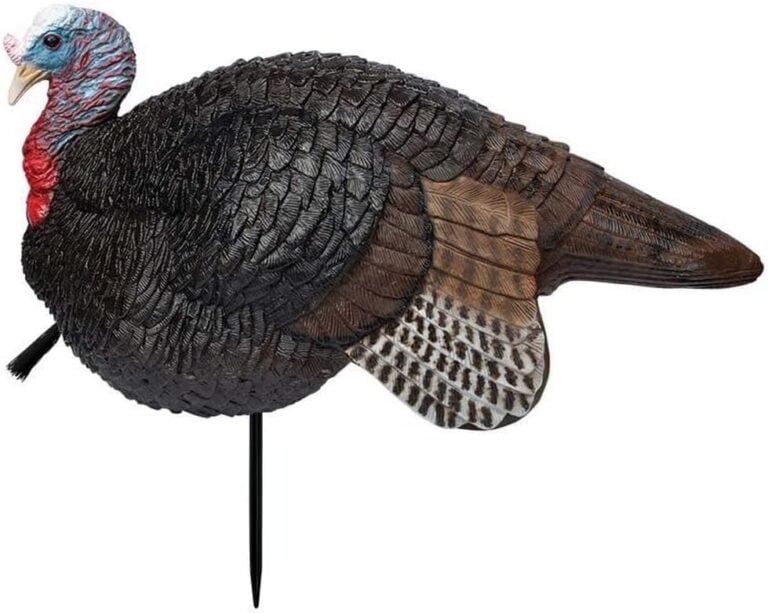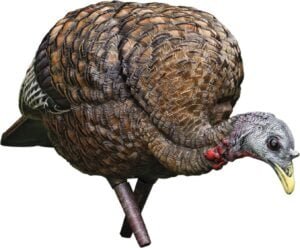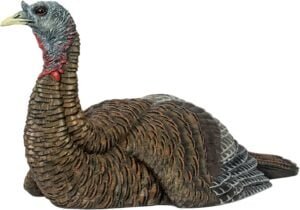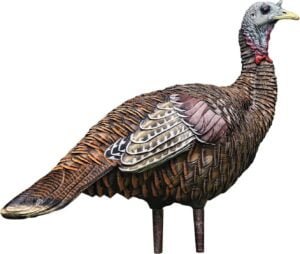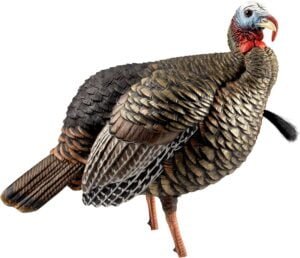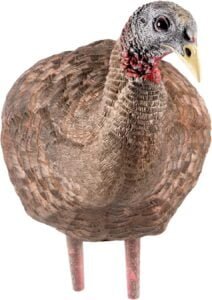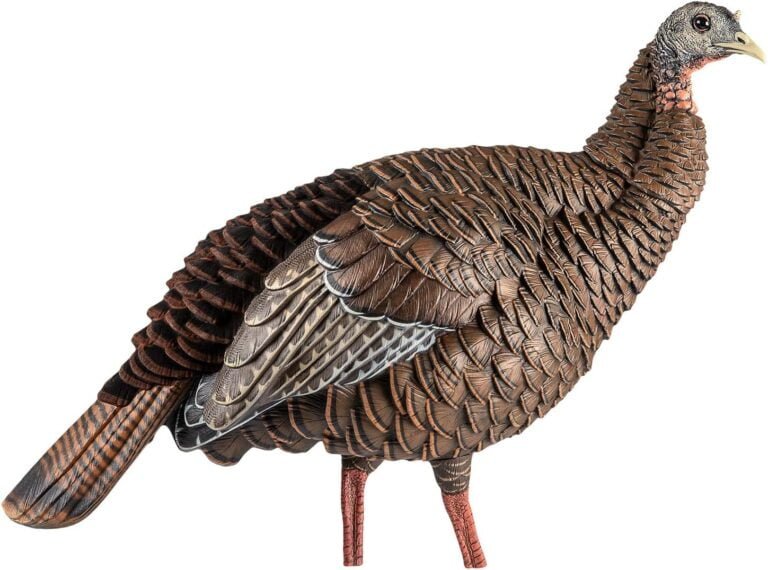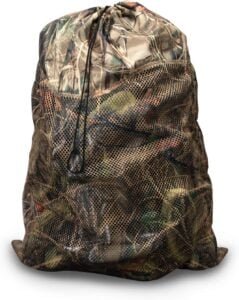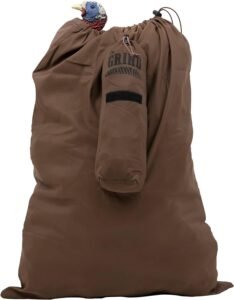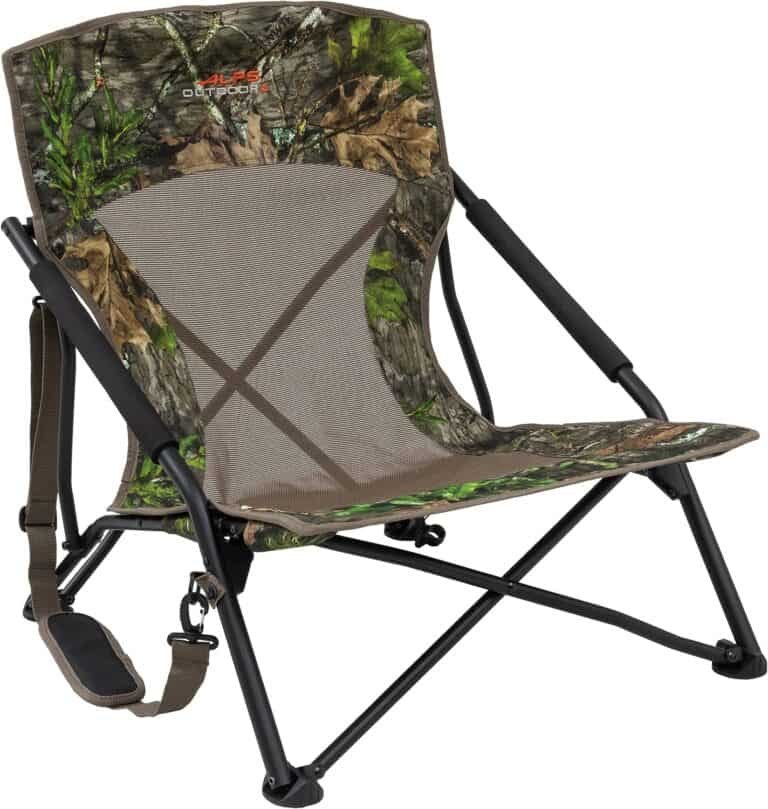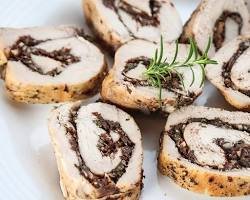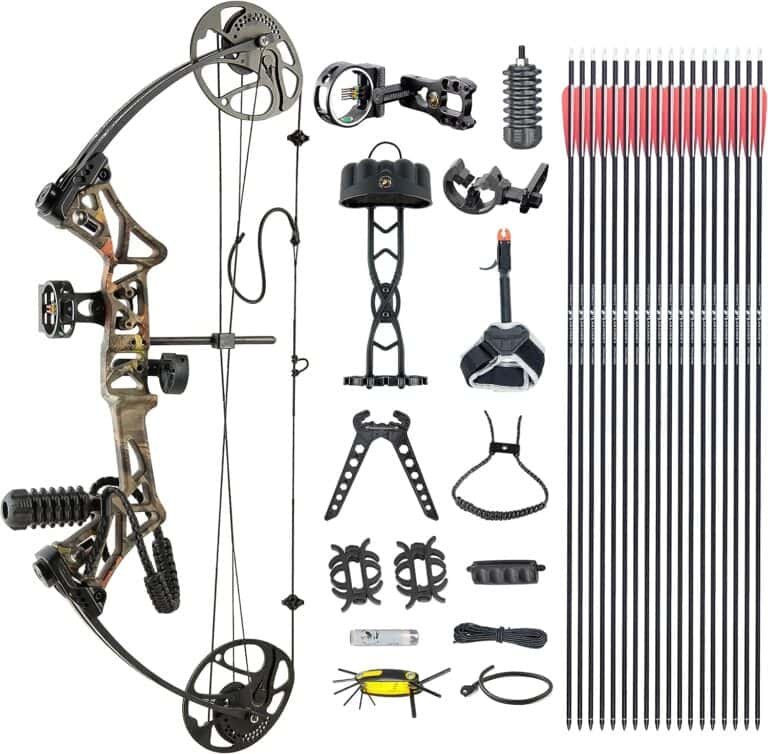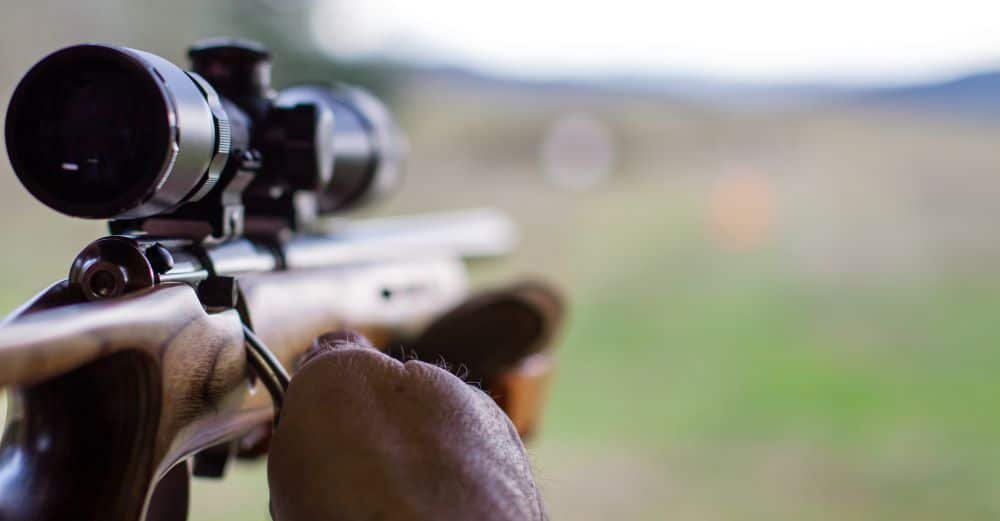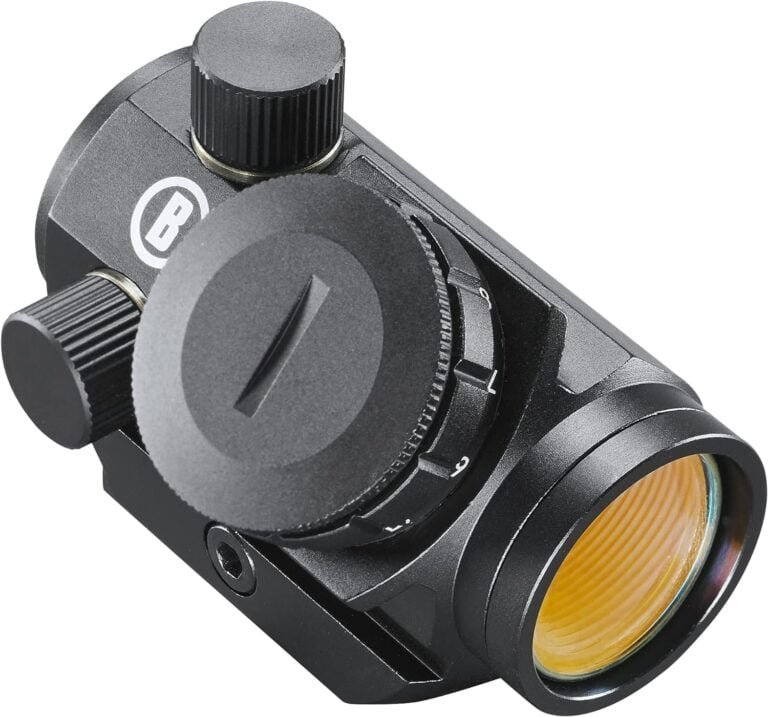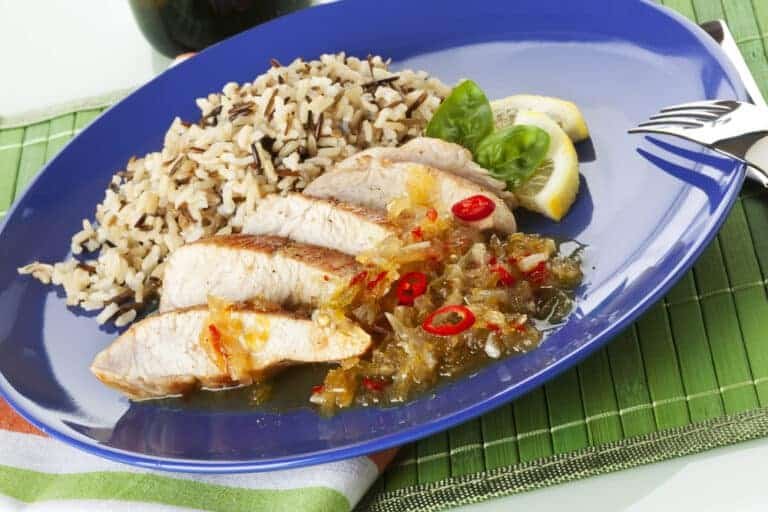Unveiling the Alluring World of Turkey Decoys: Your Ultimate Guide
Turkey hunting is an exhilarating outdoor activity that requires skill, patience, and the right equipment. Among the essential tools in a turkey hunter’s arsenal are turkey decoys. These lifelike replicas of turkeys are strategically placed in the hunting area to attract real turkeys.
The primary purpose of decoys is to deceive gobbler turkeys into thinking there are other turkeys nearby, thus luring them within range for a successful hunt. Turkey decoys come in various forms, mimicking different turkey species, ages, and genders.
Using Decoys for Turkey Hunting
Using turkey decoys can significantly increase the chances of a successful hunt for several reasons. First and foremost, by placing realistic-looking decoys in your hunting area, you create a visual illusion that there is a group of turkeys already present.
This attracts curious gobblers who want to join the flock or challenge the dominant male. Decoying helps minimize their natural wariness towards approaching unknown areas or suspicious sounds.
Turkey decoys also play an important role in providing distractions during hunts. As any experienced hunter knows, calling techniques are crucial when it comes to turkey hunting.
By combining well-executed calls with strategically positioned decoys, you can divert a gobbler’s attention away from your actual position while giving yourself ample time to aim and take an accurate shot. Furthermore, using decoys can enhance the overall experience of turkey hunting by creating realistic scenarios that simulate interactions between turkeys.
Watching these interactions unfold before your eyes adds excitement and makes for more memorable hunts. Utilizing turkey decoys effectively is essential for increasing your chances of success during turkey hunts.
These lifelike replicas serve both as alluring attractions to curious gobblers and as effective distractions, making them indispensable tools in the arsenal of any dedicated turkey hunter. So, let’s delve deeper into the various types of turkey decoys available and explore their features and advantages in the subsequent sections.
Types of Turkey Decoys
Full-body Decoys: Bringing Realism to the Game
Turkey hunting enthusiasts know the importance of harnessing the power of visual deception, and full-body decoys are a key tool in achieving this. These decoys are designed to mimic the appearance and behavior of a real turkey, with lifelike details that deceive even the most cautious gobblers. Made from realistic materials like foam or rubber, they feature intricate feather patterns, natural colors, and even movable parts such as tails and heads.
The level of detail in these decoys is astonishing; some models include iridescent feathers to reflect sunlight, further increasing their authenticity. The advantages of using full-body decoys are numerous.
Their lifelike appearance attracts curious gobblers from afar, luring them within shooting distance. Additionally, their three-dimensional shape provides depth and realism that other types of decoys may lack.
The versatility of full-body decoys allows hunters to experiment with different positions and postures to match specific hunting scenarios—whether it’s an alert gobbler or a relaxed feeding position. However, there are some disadvantages to consider when using full-body turkey decoys as well.
One significant downside is their bulkiness and weight, which can make transportation cumbersome. Also, setting up multiple full-body decoys requires time and effort in order to create an effective scene that will fool turkeys into believing they’re interacting with a live flock.
Hen Decoys: The Allure of Females
When it comes to enticing gobblers into range during turkey season, hen decoys prove themselves as invaluable assets for any hunter’s arsenal. These deceptively simple-looking decoys come in various poses and positions—some standing upright as if searching for food or others positioned in more submissive postures imitating receptive hens awaiting courtship. The allure of hen decoys lies in their ability to trigger a gobbler’s instinctual response.
Male turkeys, or gobblers, are constantly on the lookout for receptive hens during the breeding season. By using hen decoys strategically, hunters can tap into this primal drive and provoke gobblers into approaching and engaging in courtship behaviors.
Hen decoys can be used alone or in conjunction with other turkey decoys to create a realistic scene that increases the chances of success. An ideal setup might include a submissive hen positioned slightly apart from a strutting gobbler, encouraging competition between gobblers and increasing the odds of luring one within shooting range.
By using these two types of turkey decoys—full—body and hen—hunters maximize their chances of attracting wary gobblers while replicating natural turkey behavior. Understanding how these decoy types work together is vital for any successful turkey hunting endeavor.
Materials Used in Turkey Decoys
Turkey decoys come in various materials, each offering unique benefits for the discerning hunter. Foam decoys, for instance, are favored by many due to their lightweight and durable characteristics.
These decoys are easy to carry and set up in the field without weighing you down during your hunting expedition. Moreover, foam decoys often feature realistic textures and appearances, effectively mimicking the body and feathers of live turkeys.
On the other hand, rubber or plastic decoys have their own advantages. These types of decoys excel in terms of ease of setup and transportation.
Often designed with collapsible or foldable features, they can be conveniently packed into your hunting gear without taking up excessive space. Additionally, rubber or plastic decoys boast weather-resistant properties, enduring various climatic conditions without compromising their effectiveness.
Decoy Motion Devices
To enhance the allure of turkey decoys further, hunters can employ mechanical motion devices that replicate natural movements. Vibrating or spinning mechanisms are commonly integrated into some turkey decoy designs to simulate movement resembling live turkeys feeding or strutting. These motion devices add an extra layer of realism to your setup and increase your chances of attracting turkeys from a distance.
Camouflage Patterns on Turkey Decoys
The camouflage patterns on turkey decoys play a crucial role in achieving successful concealment during hunting expeditions. Realistic coloration options are available to match the natural environment where you plan to hunt turkeys carefully.
By selecting a turkey decoy with colors that blend seamlessly with the surroundings, you create an illusion that deceives even vigilant gobblers who might otherwise detect human presence. Additionally, these camouflage patterns aim to mimic the appearance of live turkeys accurately.
The intricate details on these decoys, such as feather patterns and color gradations, further enhance the overall realism. By choosing a turkey decoy with carefully crafted camouflage patterns, you significantly improve your chances of luring in unsuspecting turkeys.
Placement Techniques for Turkey Decoys
Strategic placement of turkey decoys is essential to maximize their effectiveness. A key consideration is positioning the decoys in relation to the hunter.
Creating a realistic scene with multiple decoy setups can fool approaching gobblers into thinking that there is a group of turkeys in the area, increasing your chances of attracting them closer. In addition to this, ensuring visibility from different angles is vital.
Turkeys have excellent eyesight and can spot any inconsistencies or unnatural setups. By placing your decoys in such a way that they can be seen clearly from various vantage points, you increase their believability and draw turkeys towards your hunting location.
DIY Turkey Decoy Ideas
If you’re feeling creative or prefer a more personalized touch to your turkey hunting experience, there are DIY alternatives to commercial turkey decoys. Using natural materials like feathers, sticks, or leaves, you can craft your own unique turkey decoy. This allows you to customize the appearance and features of the decoy according to your preference and local terrain.
By putting together a homemade turkey decoy using readily available materials found in nature, you not only save money but also add an extra element of authenticity to your hunting setup. Personalizing your own unique turkey decoy can bring satisfaction and a sense of accomplishment as you enter the field with a handmade creation tailored specifically for attracting those elusive gobblers.
Maintenance Tips for Turkey Decoys
Proper maintenance is crucial for extending the lifespan and effectiveness of your turkey decoys. After each hunting trip, it is essential to clean your decoys thoroughly to remove any dirt, debris, or scent that may have accumulated.
A mild soap solution and a soft cloth can be used to gently wipe down the decoys and ensure they remain in optimal condition. Furthermore, inspect your decoys regularly for any signs of wear or damage.
Replace any broken parts or repair minor damages promptly to keep them in reliable working order. Additionally, storing your turkey decoys properly in a dry and cool location will help prevent unnecessary deterioration over time.
Conclusion
Turkey decoys are valuable tools for successful turkey hunting, providing hunters with the means to attract and deceive these wary birds. By understanding the materials used in their construction, such as foam or rubber/plastic options, hunters can choose decoys that match their specific needs in terms of durability and portability.
Incorporating motion devices into turkey decoy setups adds an extra level of realism and enticement for turkeys from afar. Camouflage patterns on these decoys further enhance their effectiveness by blending seamlessly into the natural surroundings while imitating live turkeys’ appearance.
To optimize turkey hunting success with decoys, strategic placement techniques should be employed, considering visibility from various angles. For those seeking a personalized touch, DIY alternatives using natural materials allow for customization and creative expression during hunting trips.
Maintaining turkey decoys through proper cleaning and storage ensures their longevity and continued functionality over time. With careful attention to detail and thoughtful utilization of these tools, hunters can increase their chances of bagging that elusive gobbler while immersing themselves in the thrill of the hunt.
